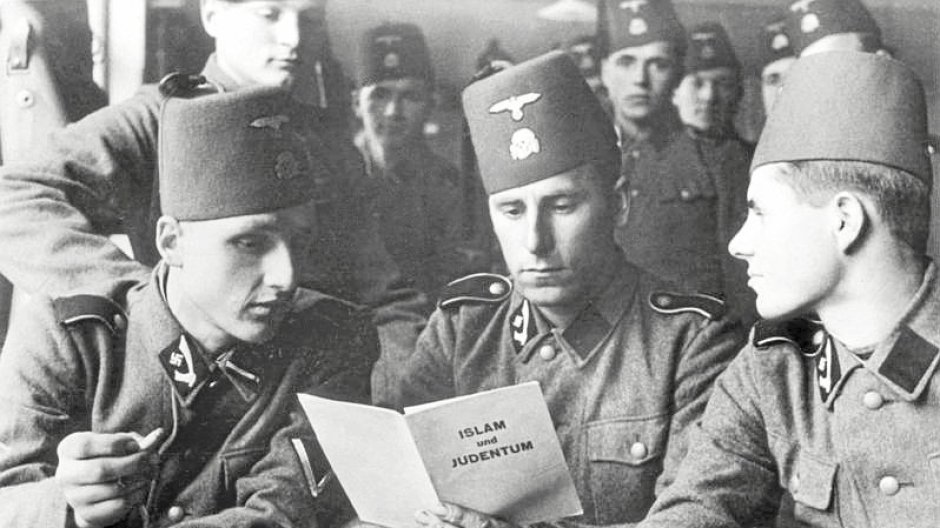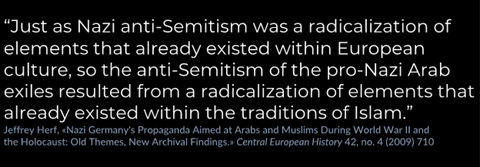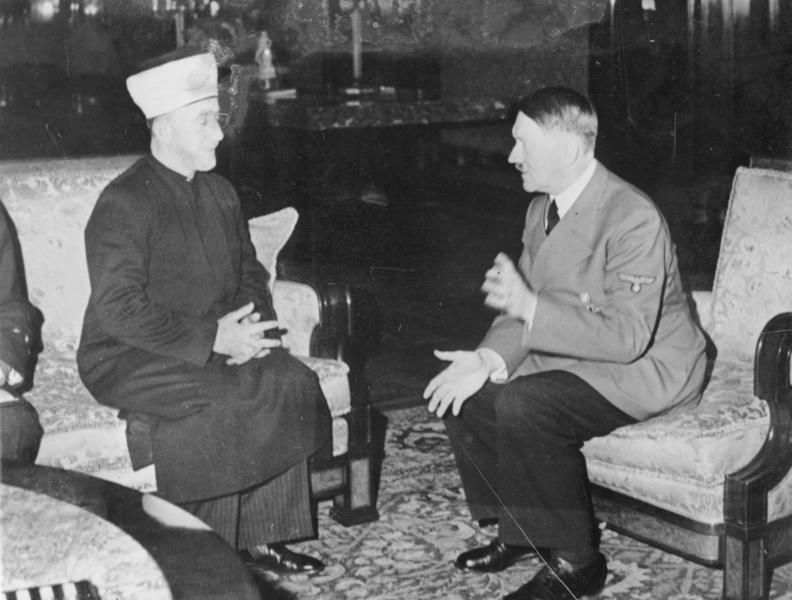Module 3: Religion & Culture
Muslims as Perpetrators

![From the physical description provided by the United States Holocaust Museum Memorial: Red felt fez with a black tassel. The front of the cap has two patches embroidered in silver thread: the top patch is in the shape of a Reichsadler, a sinistra eagle with outstretched wings holding a wreath encircling a swastika in its talons. Below this is a Totenkopf [a Death’s head], or skull and crossbones.](https://ecampusontario.pressbooks.pub/app/uploads/sites/2101/2022/02/RedFez.jpg)
This unique head piece, called a fez, belonged to a soldier of Nazi Germany’s Waffen-SS 13th division. This unit, formed in the former Yugoslavia, was comprised of Muslims from Bosnia, Herzegovina, and Croatia (there were also some troops from Albania). In 1943, Hitler approved the formation of this unit to fight against Josip Tito’s supporters. Although Germans led this group, the uniforms were designed to resemble the religious and ethnic attire traditionally worn by the men. The Waffen-SS serves as an example of how some Muslims were involved in the Nazis’ operations.




Film: Hitler Meets the Grand Mufti of Jerusalem
In the film clip below, we see Hitler meeting Hajj Amin Al-Husayni, the Grand Mufti of Jerusalem. The Grand Mufti was a prominent Muslim and Arab leader. He was the head of the Palestinian Muslim community and a supporter of Arab nationalism. Hitler agreed to help further the goals of the Mufti, including stopping the implementation of a Jewish homeland in Palestine.
Watch Hajj Amin Al-Husayni Meets Hitler (United States Holocaust Memorial Museum)
Oral History: Myriam Moatti
Myriam Moatti remembers her time as a Jewish child in Tunis during the war. Listen to her oral history as she recounts how Jews and Arabs lived peacefully side by side prior to the German occupation in 1942.
Oral History: Gisele Braka
In her testimony, Gisele Braka describes being a Jewish child in Tunis during the German occupation. Through her testimony, learn how after 1942, Jews in Tunis experienced increasing hardships. Their rights were taken away and there were round-ups on the streets.

